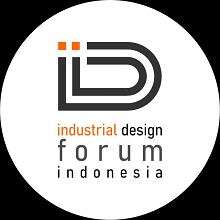TEKNOLOGI VIRTUAL REALITY: SEBAGAI CARA BARU PRESENTASI PURWARUPA DESAIN INTERIOR
Abstract
Education in the field of design begins with the creation of ideas, thoughts and concepts and ends with the creation of a prototype before being submitted to industry for mass production. The design prototype can be a digital prototype that can be viewed through Virtual Reality (VR) glasses. The urgency of this research is to provide alternative interior design engineering other than using animation and printing technical drawings on drawing paper. The virtual reality method can also provide a more interactive design engineering alternative to see the interior design of a room in more detail in a sense of space experience. This research aims to prove the presence of virtual reality technology as an alternative for creating prototypes from the results of one semester of interior design learning. The research method uses experimental description. Namely, after the screening process for indicators of the sense of space literature, a trial was carried out to measure students' tendencies in assessing their interior design prototypes both before and after using VR technology. The results show findings about how to create virtual reality technology from students' interior design final project. The description of the preference questionnaire also states that they are more likely to agree in experiencing the theory of the sense of immersive space when using VR.
Keywords
Full Text:
PDF (Bahasa Indonesia)References
Agusta, A. R., Lestari, N. C., Suriansyah, A., Nofirman, & Rukhmana, T. (2022). Pendidikan Inspiratif Era Cybernetics (Strategi Menjadikan Iklim Pembelajaran Bermakna di Era Digital). Jurnal Pendidikn Dan Konseling, 4(5), 4303–4311. https://core.ac.uk/download/pdf/322599509.pdf
Akhmadi, N. L. G. N. (2020). Preferensi Pengunjung Mahasiswa Generasi Z Masa Kini Terhadap Atribut Learning Space di Perpustakaan Akademik. ARSITEKTURA : Jurnal Ilmiah Arsitektur Dan Lingkungan Binaan, 18(1), 109–118. https://doi.org/https://doi.org/10.20961/arst.v18i1.40967
Andryanto A, N. M. (2022). Teknologi Metaverse dan NFT. Yayasan Kita Menulis.
Beck, D. (2019). Special Issue: Augmented and Virtual Reality in Education: Immersive Learning Research. Journal of Educational Computing Research. https://doi.org/10.1177/0735633119854035
Creswell, J. W. (2016). Research Design: Pendekatan Metode Kualitatif, Kuantitatif dan Campuran. Edisi Keempat (Cetakan Kesatu). Pustaka Pelajar.
Dengel, A., & Mägdefrau, J. (2018). Immersive Learning Explored: Subjective and Objective Factors Influencing Learning Outcomes in Immersive Educational Virtual Environments. International Conference on Teaching, Assessment, and Learning for Engineering. https://doi.org/10.1109/TALE.2018.8615281
Dewi Widyawati, S. S. R. J. (2023). Simulasi Furnitur Ruang dengan Augmented Reality Menggunakan Marker Based Tracking. Jurnal Minfo Polgan, 12(2), 2287–2293. https://doi.org/10.33395/jmp.v12i2.13236
Fandi Ahmad, A. G. (2024). Pengenalan Desain Interior Menggunakan Metode Virtual Reality. Dike-Jurnal Ilmu Multidisiplin, 2(1), 24–29. https://ejournal.cvrobema.com/index.php/dike/article/view/65/39
Grace Setiati, Imam Santosa, A. S. (2015). Pengaruh Pengguna, Tempat dan Proses Terhadap Place Attachment pada Coffee Shop di Bandung. (Studi Kasus Roemah Kopi).
Hanafiah, U., & Asharsinyo, D. F. (2021). Studio oriented learning environment method to improve student learning quality in interior design studio. ARTEKS : Jurnal Teknik Arsitektur, 6(2), 165–174. https://doi.org/10.30822/arteks.v6i2.455
Januar Ivan, A. E. B. W. E. F. J. (2021). Perancangan Desain Video Materi Pembelajaran untuk Mahasiswa DKV dalam Media Digital Youtube. Jurnal Seni & Reka Rancang, 3(3), 257–283. https://doi.org/https://doi.org/10.25105/jsrr.v3i2.9428
Jorgensen B.S., R. C. Stedman. (2001). Sense of place as an attitude: Lakeshore owners attitudes toward their properties. Journal of Environmental Psychology, 21, 233–248.
Kuhail, M., Elsayary, A., Farooq, S., & Alghamdi, A. A. (2022). Exploring Immersive Learning Experiences: A Survey. Informatics. https://doi.org/10.3390/INFORMATICS9040075
Lamasitudju, C. A., Miftah, Makmur, E., & Nuridayanti. (2021). Sistem Pembelajaran Digital Interaktif (Sipemberani) Mendukung Pembelajaran Online Di Sekolah Menengah Di Kota Palu. ScientiCO : Computer Science and Informatics Journal, Vol. 4, No(1), 2620–4118.
Li, Y., & Xiong, D. (2022). The Metaverse Phenomenon in the Teaching of Digital Media Art Major. Proceedings of the 2021 Conference on Art and Design: Inheritance and Innovation (ADII 2021), 643(Adii 2021), 348–353. https://doi.org/10.2991/assehr.k.220205.056
Mayawati, C. I., Evalin, N., & Anggreinie, S. (2020). Integrasi Gamifikasi ke dalam Virtual Reality untuk Mewujudkan Pembelajaran Imersif. Jurnal Lentera, Kajian Keagamaan Kelilmuwan Dan Teknologi, 19(1), 91–100.
Mulders, M., Buchner, J., & Kerres, M. (2020). A Framework for the Use of Immersive Virtual Reality in Learning Environments. International Journal of Emerging Technologies in Learning (IJET). https://doi.org/10.3991/IJET.V15I24.16615
Mulyadi, S. (2018). Metode Penelitian Kualitatif dan Mixed Method. PT RAJAGRAFINDO PERSADA.
Nazgol, H. H. Y. H. (2013). Comparison the Concepts of Sense of Place and Attachment to Place in Architectural Studies. Australian Journal of Basic and Applied Sciences.
Rachmadani, N. P. (2018). Sense of Place Pada Perpustakaan Pusat Universitas Indonesia.
Risna Puspita Giri, K., Gusti Ayu Canny Utami, I., & Hendrawan, F. (2023). Optimalisasi Limbah Paras Putih Melalui Diversifikasi Produk Interior. Jurnal Narada, 10(2), 239–256. https://doi.org/10.2241/narada.2023.v10.i2.009
Setiati, G. (2015). Peran Tatanan Ruang Publik Interior Pusat Perbelanjaan dalam Terciptanya Sense of Place.
Shamai, S. (1991). Sense of Place: an Empirical Measurement. Journal of Geoforum, 22.
Stela Amabel, & Jamaludin. (2023). Perancangan Hotel Butik The House Tour Bandung dengan Pendekatan Gaya Desain Interior Pop Art. Jurnal Narada, 10(2), 227–239. https://doi.org/DOI: 10.2241/narada.2023.v10.i2.008
Wardani, & Laksmi Kusuma. (2004). BERPIKIR KRITIS KREATIF (Sebuah Model Pendidikan di Bidang Desain Interior). Jurnal Dimensi Interior, 1(2), 97–111. https://doi.org/https://doi.org/10.9744/interior.1.2.pp.%2097-111
DOI: http://dx.doi.org/10.22441/narada.2024.v11.i1.004
Refbacks
- There are currently no refbacks.
Fakultas Desain dan Seni Kreatif
Universitas Mercu Buana
Gedung E Lantai 4
Jl. Raya Meruya Selatan no.1, Kembangan, Jakarta 11650
Tlp./Fax: +62215871335
Journal International Standard Serial Number (ISSN) Registration:
The Journal is indexed by:
Tools for Citations & Plagiarism Detection:

Ciptaan disebarluaskan di bawah Lisensi Creative Commons Atribusi-NonKomersial 4.0 Internasional
 NARADA: Jurnal Desain dan Seni
NARADA: Jurnal Desain dan Seni

























